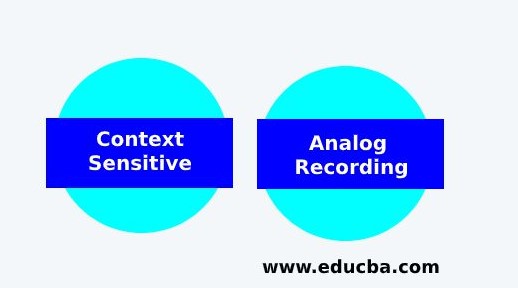
Definition of WinRunner
WinRunner is an Automation Software Testing Tool that is owned by HP and was developed by Mercury Interactive. It is known and extensively used for its ability to supports the majority of the programming languages and web development technologies such as C, C++, C#, Visual Basic, VC++, D2K, Java, HTML, Power Builder, Delphe, Cibell, etc. It is used for performing various testing techniques, which includes the functional testing, user interface testing, integration testing, regression testing, etc., by making use of its options to record the functionality for creating test steps and by using the playback UI interactions option for generating the test scripts.
How does the WinRunner Tool Work?
WinRunner is a Functional Testing tool to work on a compilation of tests that are used for collaborating with the HP QuickTest Professional and to be used as a supporting element for the quality assurance process, as a part of Test phase in the Software Development Life Cycle. This testing software is applied as a part of progress in product excellence.
The testing process here goes by capturing the functional requirement/ test requirement, by verifying the actual results against the expected results and by replaying the user operations/ functional activities performed on the software product. In this process, the tool can involuntarily perform the complete testing process while identifying the defects with respect to the product design provided by the business/ client personnel. The WinRunner Automation tool uses the Test Script Language (TSL) that is identical to the C programmingLanguage in terms of receiving the user activities as the process input and by allowing remarkable flexibility for modification and applying a constraint to the same.
The recording process is an insightful method that facilitates the generation of vigorous functional test items. In order to create the same, the tool typically records the functional flow of the software application by imitating the user actions throughout the recording process. It also allows the testing professional to straight-up revise& update the scripts produced to match meet the most functionality described in the functional requirement specification documentation.
The process proceeds by allowing the testers to add checkpoints in order to enable the comparison process for testing between the functionality assigned as the expected results with that of the functionality assigned as the actual results. These checkpoints can include the test criteria, the user interface features, images/ logo and the navigation flow in the form of URLs.
This testing process can contain a series of validations like the cosmetic appearance of the application, the web communication interfaces, the middleware communication aspects, the database validation to evaluate the functionalities. It is known for being a data-driven type of automation testing tool. Another feature named the Virtual Object Wizard allows the testing professionals to learn theWinRunnerin identifying the functionalities, the process of recording, and replaying the items assigned under the application functionality. During the execution process, the WinRunner controls the software on its own, by imitating as the user/ usersby carrying out the step by step flow on the functional flow, and the inbuilt Recovery Manager & Exception Handling features works on automatic troubleshooting characteristics in the occurrence of unpredicted actions, errors, misbehaviors, collapses, etc., for the testing process to flow through a problem-free functional flow.
During the test execution process, WinRunner can utilize the reporting tool for helping the testing professionals to gather the test results that contain the test results along with the count of the defects and the reasons/ root -cause behind the occurrence of these errors. Hence, these tests can be chosen and applied for the regression testing process as a part of the reusability function. In case of the future changes applied to the software, there won’t be a need for creating a whole new test set. Instead, it is enough to modify the existing test sets to match the newly admitted requirement specifications. It is also an efficient method for including the validation points into the existing test scripts generated by the WinRunner, with the help of the checkpoints picked to match against the application’s functionality.
WinRunner Testing Modes
WinRunner testing modes are given below:
1. Context Sensitive Recording
The Context Sensitive mode is applied for recording the software application’s functional aspects as and when the user performs various activities on the software that is subjected to the testing process. It picks on the several objects embedded inside the application like the graphical user interface including the windows, the navigation flow, the lists, the buttons, the bitmaps/ images, the page segmentation, the page contents, etc. But, it has nothing to do with the location of the previously mentioned object on the application interface. In this mode, whenever any activity is initiated in the application for the testing purpose, a TSL statement will be created as a part of the test script used for the test execution process, so as to describe the object selection and the respective action carried out.
2. Analog Recording
Analog recording mode in the WinRunner application is used for recording each and every mouse click, the inputs received from the keyboard, and the accurate coordinates picked up from the mouse in the form of a two dimensional (X, Y) input. During the test execution, this testing tool tracks down the mouse movements to gather the mentioned information. And so, this mode of Analog Recording in WinRunner is applied whenever the precise mouse coordinate is required as the input for test execution.
Advantages and Disadvantages
Some of the advantages and disadvantages are:
Advantages
- Enables Rapid Testing
- Provides Consistency
- Reusability of tests
- Customizable for future changes
Disadvantages
- Doesn’t apply for Stress or Load or Scalability Testing.
- Doesn’t support .net programming
- Tester should have programming knowledge/experience
- It doesn’t support multimedia systems.
Conclusion
The Testing process in WinRunner flows from the identification of functions, the recording of application activity, the test script management, the execution of tests, and finally the analysis & reporting of the gathered test results. It can be applied on the various software development methods like the Waterfall, Agile, and even the V–V model for the testing phase to be automated in accordance to the functional specification.
Recommended Articles
This is a guide to WinRunner. Here we also discuss the definition and how does the WinRunner tool work along with advantages and disadvantages. You may also have a look at the following articles to learn more –

